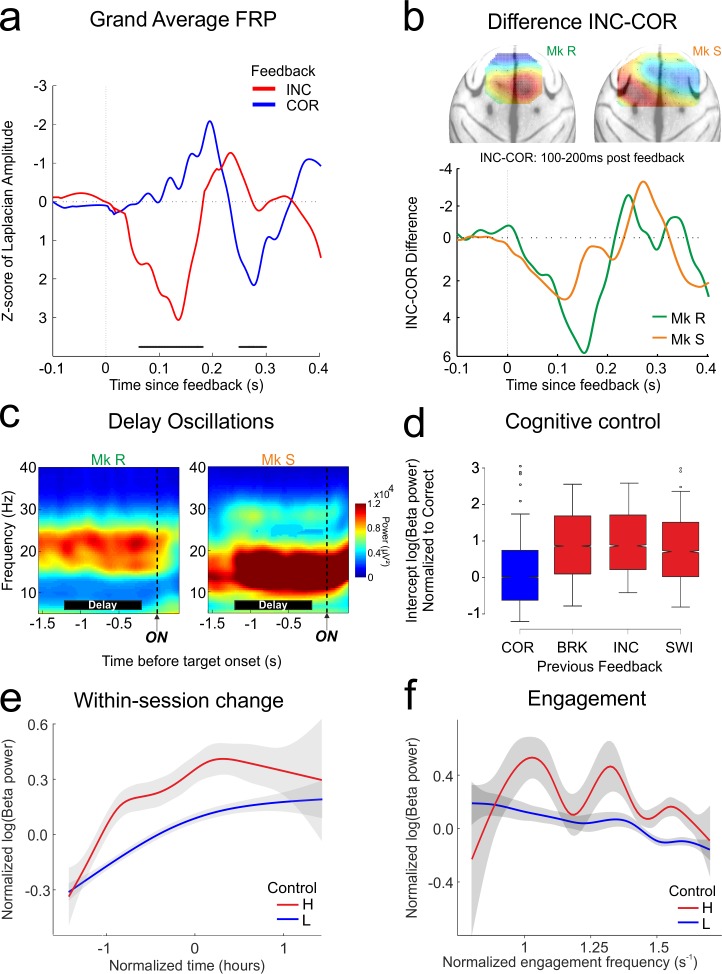Fig 2. Frontal neurophysiology in BL.
Performance monitoring, cognitive control, and motivation are represented in neurophysiological markers within prefrontal cortex prior to the onset of MPTP treatment. A. Feedback potential grand average combining both monkeys, aligned to feedback presentation, showing clear differentiation of correct (COR) from incorrect (INC) feedback. Black bars: permutation test p < 0.01 between correct and incorrect. B. Difference potentials INC-COR for the FRPs, and spatial representations of the surface Laplacian of these potentials projected onto a dorsal view of a standard macaque brain. The peak difference (red) can be seen over the contralateral hemisphere to the working arm of the monkey (Monkey R left-handed, Monkey S right-handed). C. Time frequency representations of the delay epoch (black bars) aligned to stimulus onset (ON). D–F: Properties of delay beta power in BL as revealed by linear mixed effect model selection. For the figures, data are normalized, then combined for the two monkeys. D. Modulation of delay beta power by the outcome of the previous trial. Power is increased when the previous outcome instructs application of higher cognitive control. Red bars, high control conditions: BRK: break fixation/touch, INC: incorrect choice, SWI: problem switch after STC. This is compared to blue bar, low control condition: COR: correct choice. Normalization is to the COR feedback condition. E. Within-session increase in beta power. There is no significant interaction between this factor and cognitive control, as revealed by an increase in beta for both low and high control trials. F. Reduction in beta power with increasing engagement frequency of the monkey. Conventions as in previous figure.

